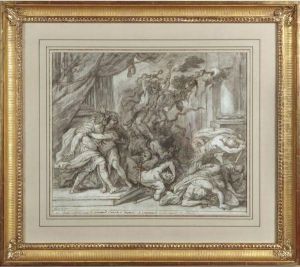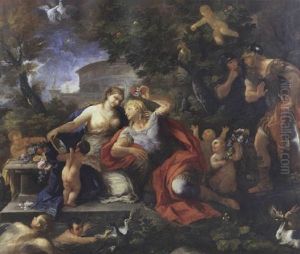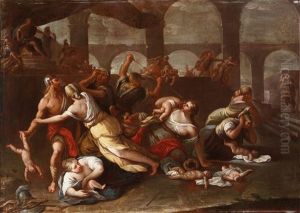Giuseppe Simonelli Paintings
Giuseppe Simonelli was an Italian painter who lived during the Baroque period, a time characterized by dramatic expression and grandeur in the arts. Born in 1650, Simonelli hailed from Naples, a city that was a significant artistic center in Italy during the 17th century. He was a notable follower of Luca Giordano, one of the most important Neapolitan painters of the time, and his style was heavily influenced by Giordano's vibrant and dynamic compositions.
Simonelli's work primarily focused on religious subjects, as was common for the time, but he also ventured into mythological themes and portraits. His paintings are known for their vivid coloration, energetic figures, and dramatic use of light and shadow, which were all hallmarks of the Baroque style. Although he was influenced by his mentor, Giordano, Simonelli managed to develop his own distinct approach to painting, which contributed to the rich tapestry of Neapolitan art during the late 17th and early 18th centuries.
Throughout his career, Simonelli worked on various significant commissions for churches and noble families in Naples and its surrounding areas. His ability to adapt his style to suit the tastes of his patrons while still infusing his work with his unique artistic voice made him a sought-after painter during his lifetime.
Despite his contributions to the Neapolitan Baroque movement, Giuseppe Simonelli's work has not received the same level of scholarly attention as some of his contemporaries. However, his paintings remain a testament to the vibrancy and dynamism of Neapolitan art during this period. Simonelli passed away in 1710, leaving behind a body of work that continues to be studied and appreciated by art historians and enthusiasts alike.


























